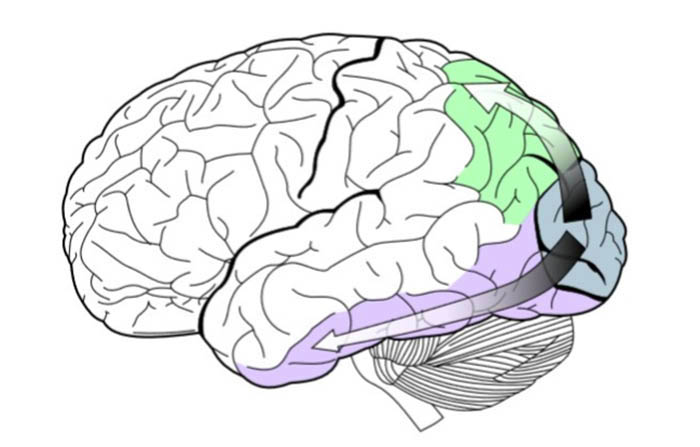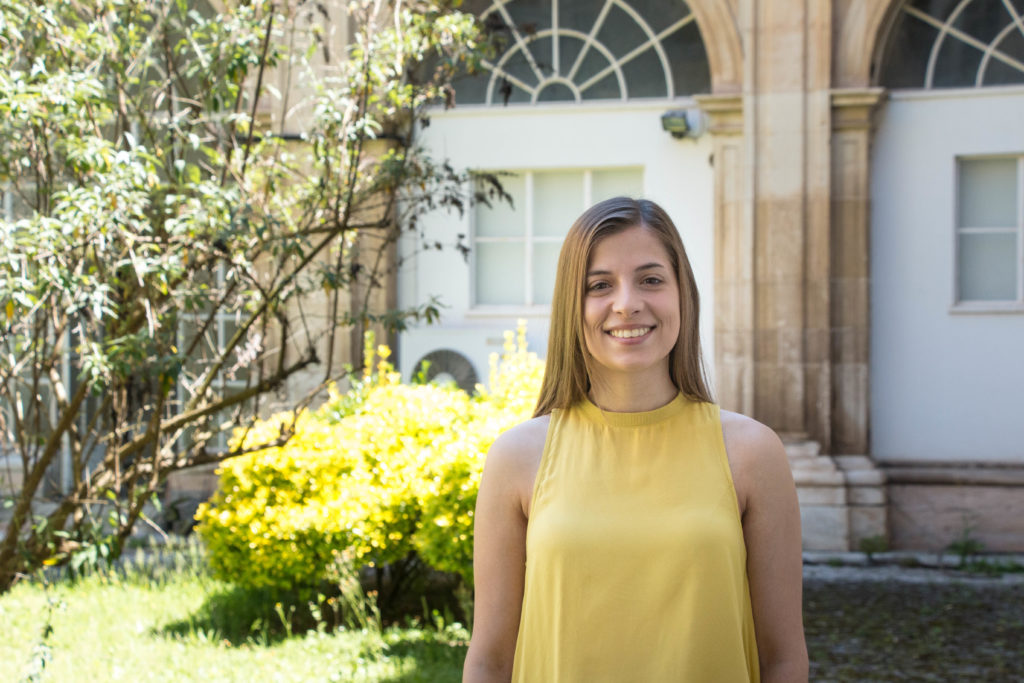What is the similarity between a hand and a pen? None at first, but scientists know that, for some reason, these objects are closely linked in our brain.
Object recognition is done in fractions of a second, with the visual cortex being the zone where this information processing takes place. It is known that different categories of objects activate different areas in this same region.
However, visualizing hands and manipulable objects (such as a pen or hammer) activate two common brain areas. And nobody really knows why.
Visual processing in the brain starts in the primary visual cortex (grey area), and may travel through the dorsal pathway (green area), which is responsible for visual and motor interaction with objects, or the ventral pathway (purple area), related to the identification of objects through form.
“The objective is to understand how these categories, which, at the outset, would not have much to do with each other, relate to each other”, says Lénia Amaral, PhD student at Proaction Lab, Coimbra University.
To do this, it uses electrostimulation techniques to activate or inhibit specific areas in the brain – a technique called tDCS. “Our goal with tDCS is to understand exactly what could be at stake here.”
Understanding how the brain works is essential to developing treatments for areas of the brain that are damaged, for example, after a stroke. “If we understand which cognitive processes are affected in these injuries, their rehabilitation could be easier”, continues the student.
Lénia Amaral presented her research, using language accessible to non-specialists, on May 16, as a participant in the initiative PubhD Coimbra, which took place at Aqui Base Tango. The young researcher gave a “class in the way of conversation” about what might be going on, after all, in our minds.
See here the video on this subject: https://www.facebook.com/ProactionLab/videos/427076097869985/
Author Daniel Ribeiro (Proaction Lab)
Science in the Regional Press – Ciência Viva



















Comments